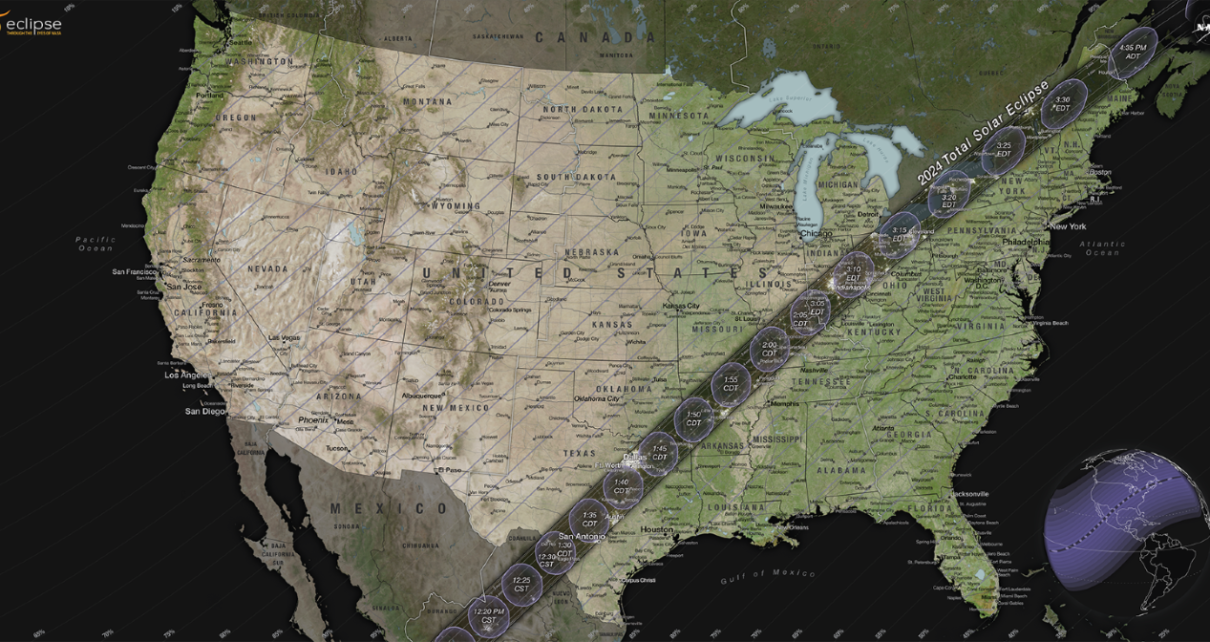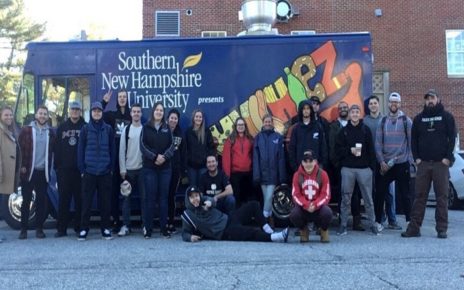On Monday, April 8, New Hampshire will see its first total solar eclipse event in 65 years. The last total solar eclipse seen in New Hampshire was in 1959. Although New Hampshire hasn’t been in the path of totality since, eclipse events happen about once every 18 months globally. These events are not always visible because they pass over different hemispheres or other parts of the world, and some are not classified as total solar eclipses in certain regions.
The path of the eclipse is starting in Texas, moving northeast over parts of Arkansas, Missouri, Illinois, Indiana, Ohio, and northern parts of New York, Vermont, New Hampshire, and Maine. The eclipse on the Southern New Hampshire University campus will not be in the umbra of the eclipse or the path of totality. The campus lies in the penumbra, where the sun will be covered by about ~95% which will still be very noticeable and a much-worthy view.
SNHU will be hosting a watch party on April 8 at the Robert Frost Green Space starting at 1 p.m. to bring the community together for this amazing phenomenon. The eclipse will start in the southern part of Texas at 2:30 p.m. and reach the SNHU campus by about 3:25-3:30 p.m. The peak viewing of the eclipse should last about a minute or so.
Solar eclipses can be dangerous to look at with the naked eye because it is essentially looking at the sun. SNHU is providing solar eclipse glasses at the viewing to ensure viewers keep their eyes protected while enjoying the event. Tequila sunrise mocktails will be made for everyone to celebrate the event.
To get live coverage of telescope data following the eclipse, NASA will be streaming on their YouTube channel from various locations including Dallas, TX, Niagara Falls, NY, Indianapolis, IN, and a few others, including the Glenn Research Center in Cleveland, OH, which lies in the umbra of the eclipse.
Although it is highly encouraged to safely witness the event outside with the SNHU community or wherever you would like to watch it from, these streaming options can be great for commentary and safe viewing.
For more information visit NASA’s Eclipse page at https://science.nasa.gov/eclipses.




